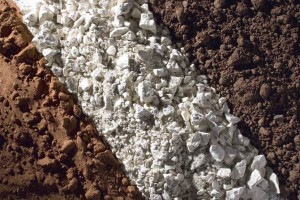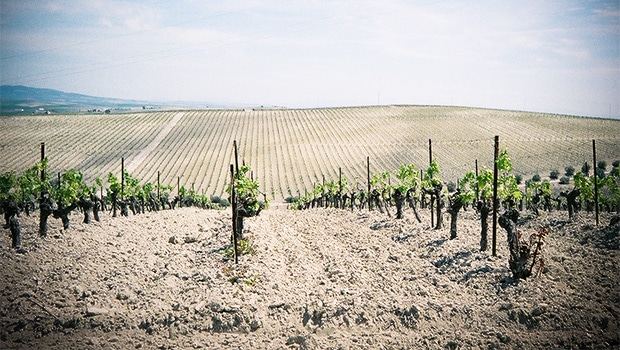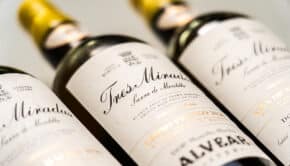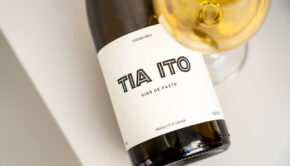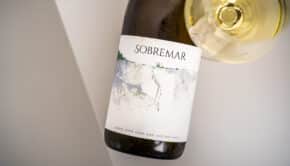Albariza, Barros and Arenas
The Sherry region is an area of open, rolling hills and gentle slopes. While most people think it’s always sunny and it never rains in the region, this is not true. There is around 620 liters / m² of rainfall each year (in Belgium, known as a rainy country, we get around 800 l/m²). The big difference is that in Andalucía showers only occur during wintertime, usually in brisk tropical-style storms. Summers are very sunny, with more than 300 days of sunshine, and extremely hot with temperatures often touching 40°C.
If you take into account the fact that the D.O. Jerez-Xérès-Sherry does not allow any kind of additional irrigation, it may seem impossible for grapes to survive in this climate without drying out completely. The solution to this problem is in the unique soil, especially the Albariza soil, which is able to soak up the rain and deliver it during the summer.
Three soil types in the sherry region
Most of the land in the sherry region was once covered by an inland sea and is made up of marine sediments (fossils and skeletons of plankton, transformed into chalk), mixed with limestone and clay. There are three types of soil in the Jerez district generally used for growing grapes:
Interestingly, these three types of soils had already been identified by the Roman agricultural writer Lucius Junius Columella, who was born in Cádiz (4-70 AD) and talked about cretosi, sabulosi and palustres. It was the Spanish Esteban Boutelou who imposed the name albariza, thereby calling it by its colour rather than its major component (creta ~ craie ~ chalk).
Albariza soil
Albariza is the lightest soil (alba means white) and the best for growing Palomino grapes. It contains between 30 and 80 per cent chalk, the rest is a mix of limestone, clay and sand. Albariza has similar characteristics to the soil in Chablis and Champagne. Most sources will simply talk about pure Albariza but in reality a whole list of sub-types have been described, mostly based on their limestone contents, such as barrajuela, antehojuelas, tajón, lustrillo, tosca cerrada... Read more about this in my article Albariza revisited: Antehojuela, Tosca Cerrada, Barrajuela
In 2013 almost 90% of the vineyards in the region were planted on albariza. It is most prominent in the Jerez Superior area, a sub-region between Sanlúcar de Barrameda and the Guadalete River. The percentage of albariza used to be lower, but the lesser popularity of sherry caused a kind of natural selection: inferior vineyards were replaced with sunflowers, solar panels or other activities and only the higher quality albariza vineyards remained.
Characteristics of Albariza
Its main characteristic from a wine-growing point of view is the high moisture retaining power, storing rainfall in order to nourish the vines during the dry months. The leafy structure of albariza opens up like a sponge during the rainy season and absorbs immense quantities of water. Later the upper levels of soil bake hard under the heat of the summer, thus creating an impermeable crust, preventing the evaporation by sunlight. Together with the moist Poniente winds, heavy dew forms overnight, helping the vines to get extra moisture and withstand the extreme temperatures.
Other benefits of the albariza soil include its white colour, which reflects sunlight back up to the vine, aiding in photosynthesis. Also, albariza soil is rather loose and easy to work, which facilitates the distribution of the root system. Roots up to twelve metres in length have been found at depths of up to six metres in albariza soil.
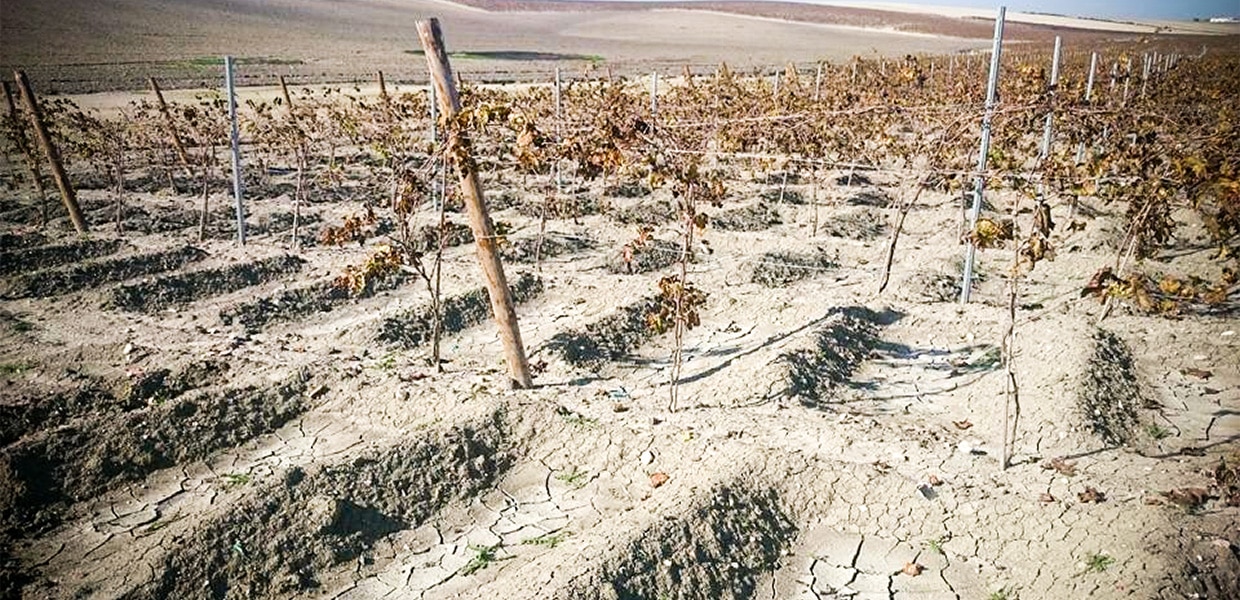
To maximize the intake of winter rain, albariza soils are sometimes banked up (aserpiado or alumbrado in Spanish). The different heaps enlarge the surface area and create little reservoirs for water. In spring the soil is levelled out again.
Although the albariza soil is perfect for Palomino grapes, it can also be used for Pedro Ximénez grapes. However there are very little P.X. vineyards left in the Jerez area, almost none actually. Nowadays these grapes are imported from the neighbouring D.O. Montilla – Moriles.
Barros
This is a rich, dark brown soil, 10 per cent chalk with a higher clay content and more organic matter. Barros are more fertile but also more difficult to work. This type of soil also has little moisture-retaining capacity due to a lower chalk content. It is prominent in low-lying valleys and at the foot of hills. Barros yield more grapes than albariza, but the quality is lower, so they result in a courser wine. This means barros are not suitable for Fino wines. Most of this soil has been planted in periods of expansion of the wine industry, but in recent years, due to the lowering demand for sherry, a lot of vineyards on barros have been destroyed again.
Arenas
Arenas are a slightly yellowish / reddish soil, with 10-20 per cent chalk but with a high sand content. This type of soil is more common in coastal areas, especially in the area around Chipiona / Rota / El Puerto . They don’t hold water very well, so they are not suited for Palomino grapes. Instead they are mostly planted with Moscatel grapes – these grapes don’t need as much water and are happy on any type of old soil.
